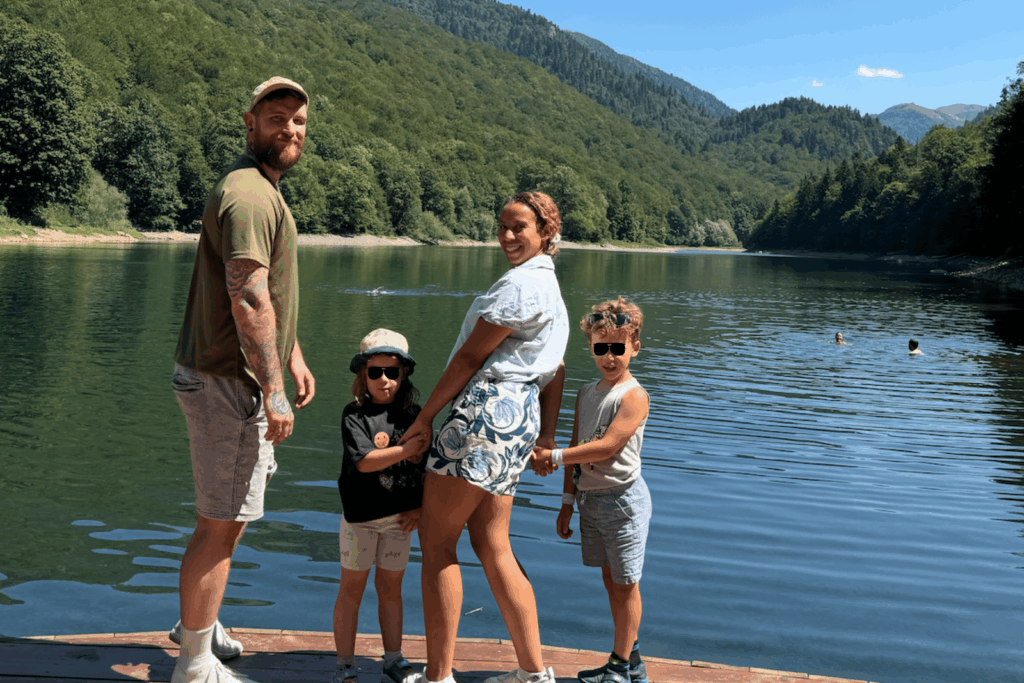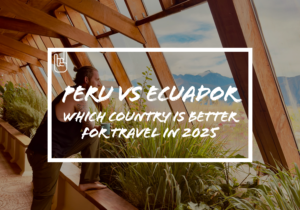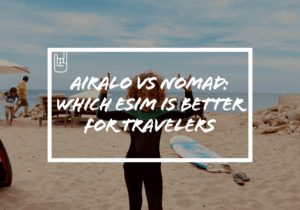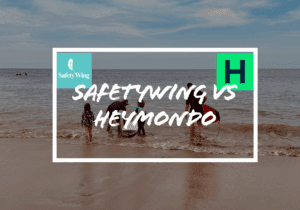Huanchaco & Trujillo, Peru: The Complete Family + Slow Travel Guide
After weeks of chasing waves and sunshine across northern Peru, we found ourselves in Huanchaco, a coastal town where ancient traditions still roll in with the surf.
Just outside Trujillo’s city buzz, this was our pause point: a place where slow mornings met rich history, where the kids could play by the sea while we explored ruins older than memory. From local markets to surf lessons and a day trip to the Huacas del Sol y la Luna, Huanchaco turned out to be that perfect blend of learning, culture, and calm, the kind of spot that reminds you why you chose to travel this way in the first place.
Updated: November 2025
Visited: Huanchacho, Peru (Oct 2025)
Family travel, long-term route through South America
The Huanchaco & Trujillo Essentials
Getting There / Fly LIM → TRU (Trujillo) in ~1 hr, then a 20–25 min taxi to Huanchaco. Buses from Lima / Piura / Máncora arrive into Trujillo terminals; from there, grab a registered taxi or Uber/InDriver.
Why Base in Huanchaco / Small, walkable surf town with sunset promenade and caballitos de totora. Close to Trujillo for errands, ATMs and museums; easy day trips to major ruins.
Surf & Lessons / Lessons run daily on the malecón; we loved this family-friendly surf class on GetYourGuide , boards, wetsuits, and endless laughs included. Rentals hover around 25 soles if you just want to play in the foam.
Ruins Not to Miss /
– Huacas del Sol y de la Luna (Moche) guided entry (included with ticket), vivid murals, kid-engaging stories.
,Chan Chan (Chimú) world’s largest adobe city; pair with the onsite museum for context.
Both can be reached by taxi or colectivo + short hop.
Getting Around / Huanchaco is small enough to explore on foot, with taxis or InDriver for short hops to Trujillo or the ruins. If you’re planning a few day trips, hiring a car through Discover Cars gives you total flexibility (and air-con for the little ones).
Where to Stay / For families and longer stays, a simple apartment near the promenade (kitchen + washer) beats a noisy beachfront hostel. Shorter trips: small family-run hotels around the north end for quick access to the pier and surf schools. Read my Guide here.
Food & Coffee / Morning coffee at Crepes Sol; pizza night at Bassano; easy plates at El Ancla; sweets from DulciNelly. Stock fruit and basics at the Huanchaco market to keep costs down.
Best Time / Dry months May–Oct bring clearer sunsets and steadier surf; summer (Dec–Mar) is warmer but busier. Sunset is the magic hour for photos (and calmer kids).
We arrived bleary-eyed around 7 a.m., backpacks in hand, and learned two things right away: first, Peru’s night buses are underrated, and second, early check-ins are your best friend. (Pro tip: always message your Airbnb host ahead of time, most will let you drop bags or even settle in early if you ask nicely.)
Huanchaco welcomed us with soft morning light, salt air, and the sound of waves breaking against the pier. It’s a town that’s both chaotic and calm, fishermen hauling in their catch on traditional caballitos de totora (reed boats) while surfers paddle out just beyond them. A mix of local life, surf culture, and that faded-but-charming coastal vibe that still feels authentically Peruvian.
Is Huanchaco Worth Visiting?
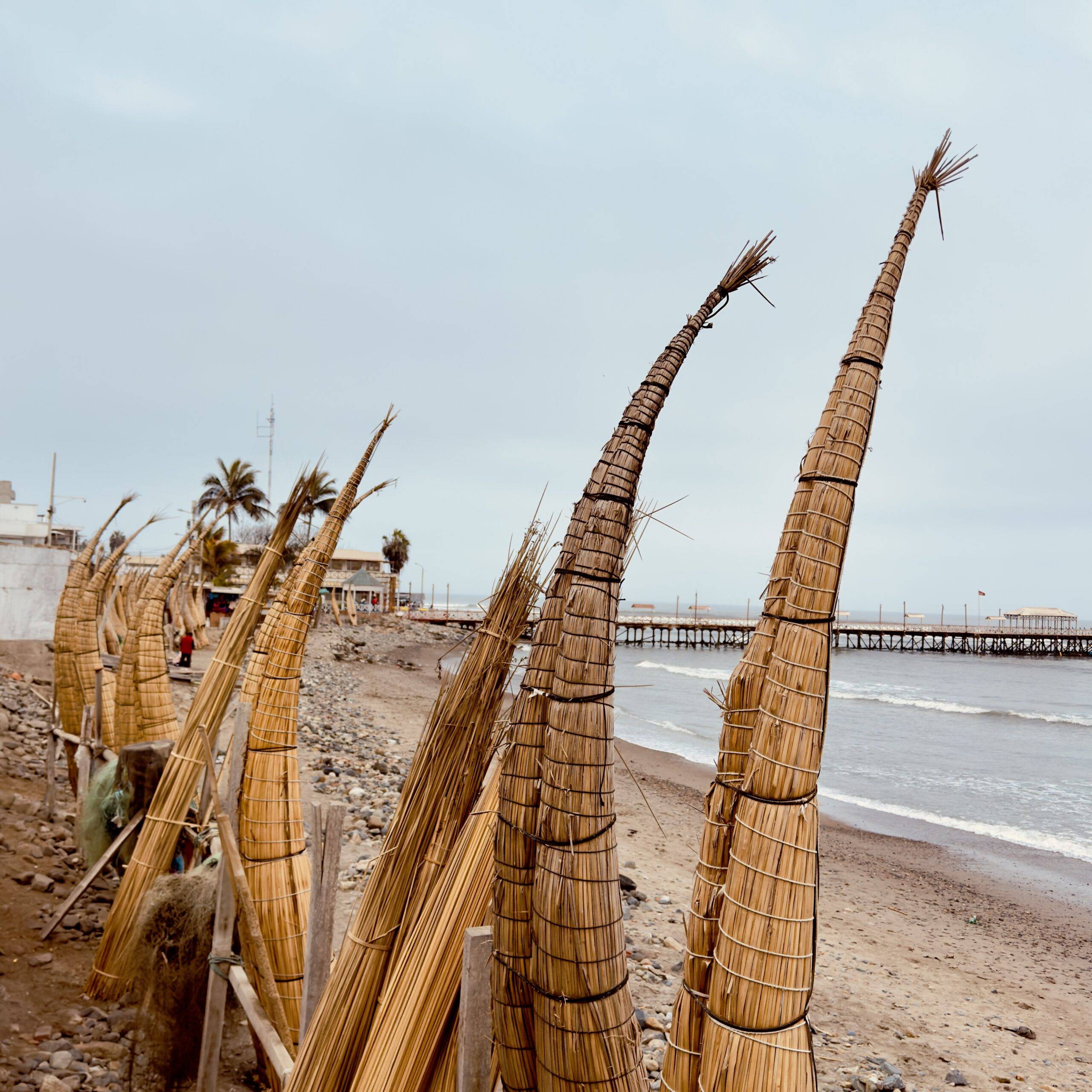
It depends on what kind of traveller you are, and what kind of Peru you want to see.
If you’re chasing pristine beaches and resort vibes, probably not. The sand here is darker, and litter is more visible than in smaller surf towns like Máncora or Lobitos. But if you’re after authentic culture, easy surf, and a slower pace within reach of real history, Huanchaco is absolutely worth it.
It’s one of the few places where old and new Peru meet right on the shore. You’ll see traditional reed fishing boats being built beside surf schools, locals sharing the same waves as tourists, and families gathered on the promenade eating arroz con leche from a beachside stall.
For families and slow travellers, Huanchaco hits a sweet spot:
It’s safe, walkable, and small enough to settle in easily.
It’s close to Trujillo’s major ruins and museums for cultural day trips.
It has just enough cafés, markets, and creature comforts to make a longer stay practical.
Yes, it’s rough around the edges, the kind of place that needs a few clean-up campaigns more than another surf hostel, but there’s heart here. The sunsets are golden, the surf’s gentle enough for beginners, and the people are welcoming in that “make yourself at home” kind of way.
In short: Huanchaco isn’t perfect, but it’s real, and for slow travellers, that’s often the best kind of destination.
How to Get to Huanchaco (and Trujillo)
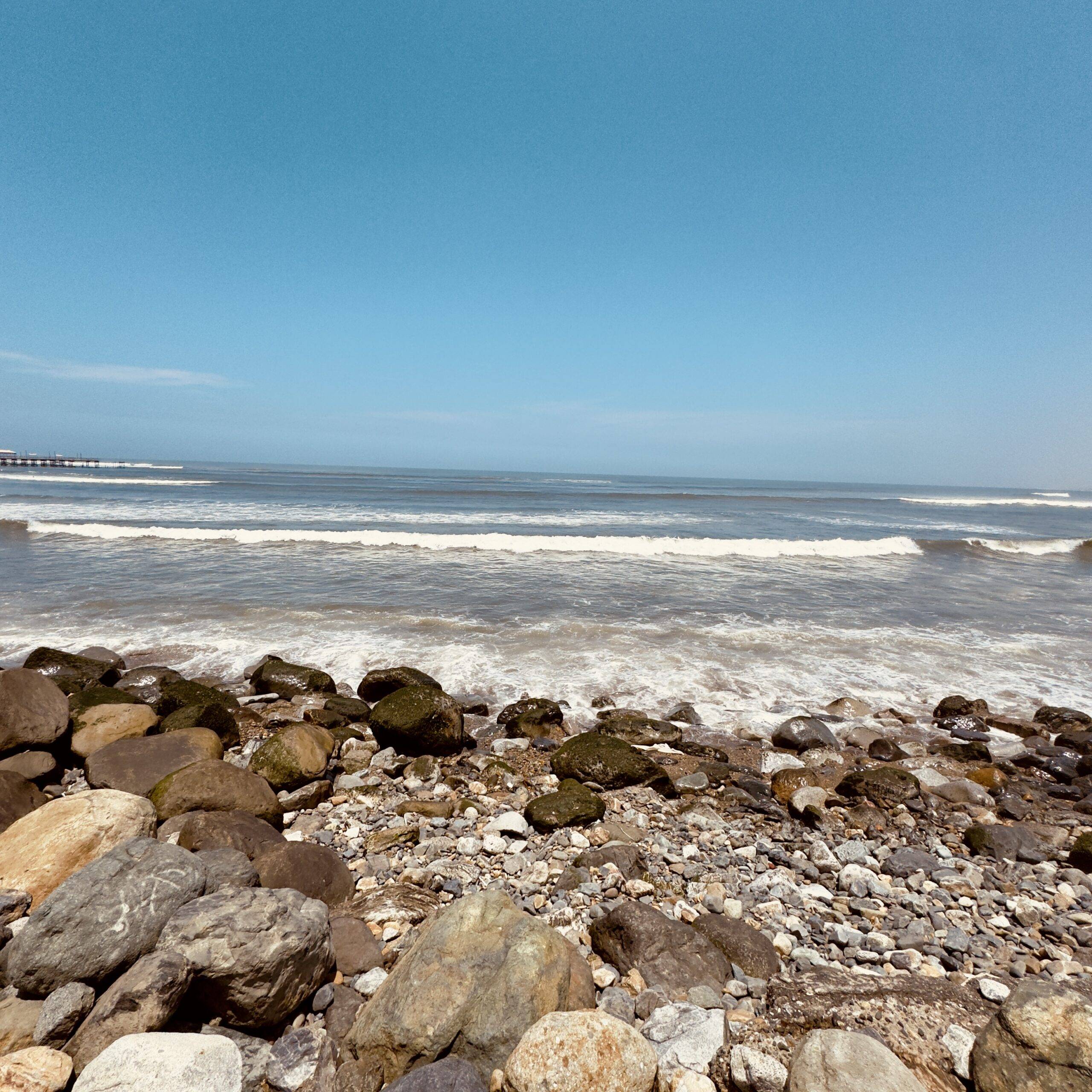
Huanchaco sits about 12 kilometres northwest of Trujillo, Peru’s third-largest city, on the northern coast. Most travellers arrive via Trujillo, since it’s the main transport hub and the last stop before the coast.
By Bus from the North (Máncora, Lobitos, or Piura)
Coming down the coast, you’ll likely connect through Talara or Piura. We made the trip directly from Lobitos, which meant a quick (and slightly questionable) taxi ride to the Talara bus station before catching our 8-hour night bus to Trujillo.
Honestly? We’ve come to prefer night buses in Peru. They’re more efficient, saving on a night’s accommodation, and surprisingly comfortable. Seats recline fully, you get a blanket, and with fewer stops, time flies by. Most major companies like Oltursa, Cruz del Sur, and Linea offer routes with safety standards that feel secure for families.
💡 Tip: Bring snacks and layers, air conditioning can get chilly, and food stops are minimal overnight.
Once in Trujillo, it’s a short 20–25 minute taxi ride to Huanchaco. We paid 20 soles for a registered taxi at the terminal. Uber and InDriver also operate here if you prefer booking via app.
From Lima (or Southern Peru)
If you’re coming from Lima, you have two main options:
-
By Bus: It’s a long one, about 9–10 hours, but affordable and scenic.
-
Recommended companies: Oltursa, Cruz del Sur, Lineas.
-
Tickets range between 60–100 soles, depending on seat type.
-
-
By Plane: The fastest option is a 1-hour flight from Lima to Trujillo Airport (TRU). From there, grab a taxi to Huanchaco for 20–25 soles.
Flights are ideal for shorter trips or families with younger kids, but bus travel still gives that slow-travel rhythm (and saves a night’s stay).
Getting Around Locally
Huanchaco itself is small and walkable, the main promenade runs along the beach, with everything within 10–15 minutes on foot. For day trips or runs into Trujillo, you’ll find:
-
Colectivos (shared minibuses): Frequent and cheap (2–3 soles per ride), but often crowded.
-
Taxis: Safer and more comfortable; negotiate price beforehand or use InDriver.
-
Mototaxis: Fun for short hops, though less common than in smaller beach towns.
💬 Our Travel Tip:
Don’t be afraid to ask your Airbnb host about early check-in or transport help, most are used to guests arriving on early morning buses and can often organise taxis or bag drops. We’ve done this several times and it’s made those 7 a.m. arrivals much easier.
Where to Stay in Huanchaco as a Family
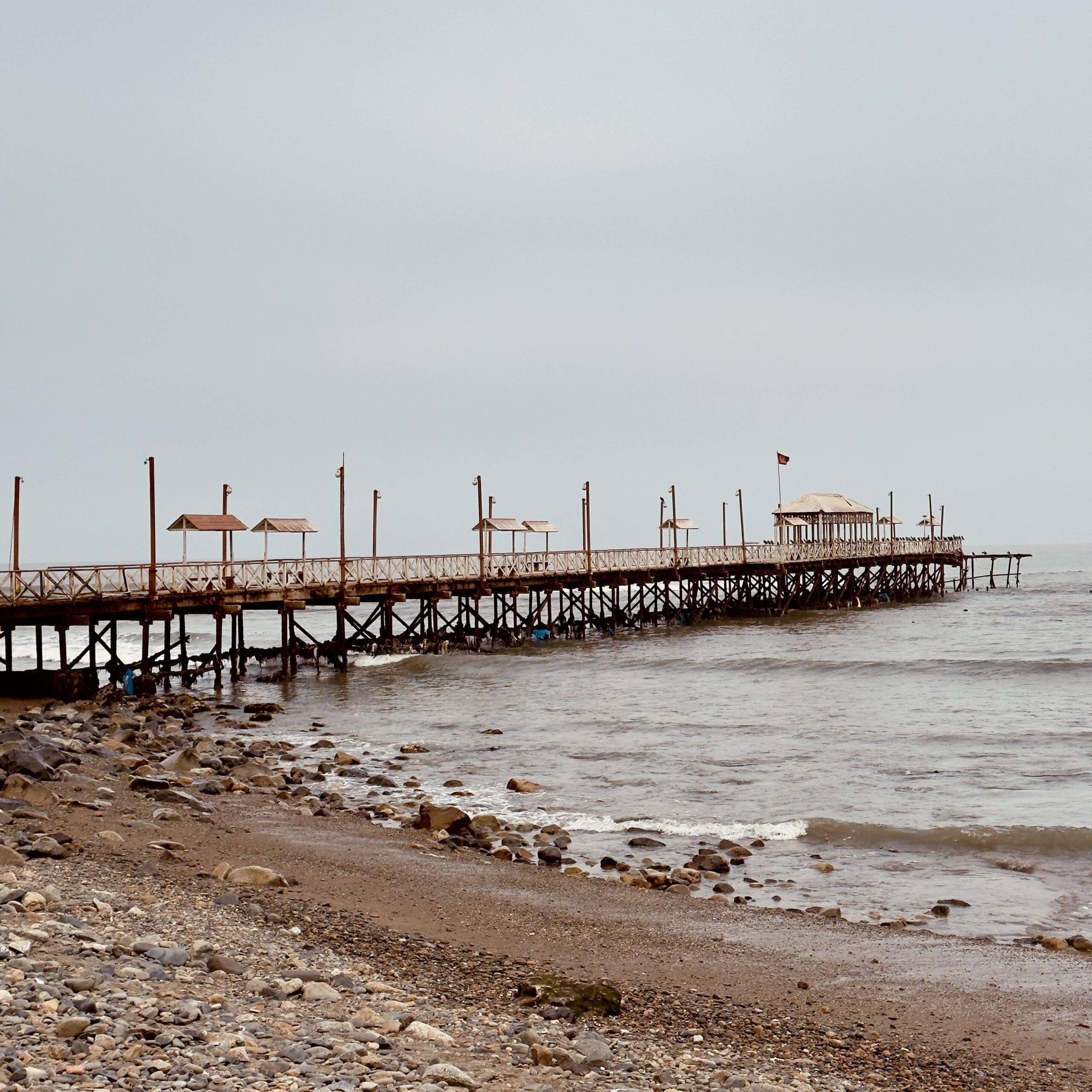
Huanchaco is small enough that you can walk almost anywhere, so where you stay is less about location and more about vibe. The town stretches along one main coastal road, the closer you are to the beach, the better the views (and the sound of the waves).
We stayed in a small Airbnb apartment just a few blocks back from the ocean. Nothing fancy, but it had what mattered: a kitchenette, hot water, and a quiet spot for the kids to play. Our host kindly allowed an early check-in, a huge bonus after arriving from an overnight bus, and even shared local tips on where to shop for fresh fruit and vegetables.
If you’re booking longer-term or travelling as a family, Airbnb or apartment stays are your best bet here. Having a kitchen cuts food costs and gives you flexibility when local restaurants don’t open early or late. Also as sad as ity sounds an appartment with a washer makes life a lot easier and less smellier.
Best Areas to Stay
- Beachfront / North End: Closest to the surf schools, pier, and main restaurants. Ideal for short stays or surf trips.
-
Central Huanchaco: Slightly inland, quieter, and often cheaper. Many Airbnbs and local guesthouses are tucked into side streets here.
-
South End: Quieter still, with some new apartment complexes and boutique hostels, great for longer stays and families wanting a little peace.
Recommended Stay Types
Budget:
Frogs Chillhouse – Fun vibe, rooftop views, and communal kitchen; great for surf travellers on a budget.
Mid-Range / Family-Friendly:
Hotel Huancarute – Family-run hotel with pool and spacious rooms; a bit dated, but peaceful and reliable.
Apartment & Airbnb Options:
Look for “Entire Apartment” listings between 90–150 soles per night. Many include small kitchens, washing machines, and patios — ideal for families staying a week or more.
Booking Tips
- Check water schedules, some properties have hot water only at certain times of day.
-
Wi-Fi varies wildly; message hosts before booking if you plan to work remotely.
-
Ask if your host can arrange airport or bus pick-up, most will for a small extra fee.
Huanchaco isn’t about luxury stays; it’s about easy living. Whether it’s a surf hostel with hammocks or a cozy apartment with ocean views, accommodation here invites you to slow down and stay awhile.
Things to Do in Huanchaco
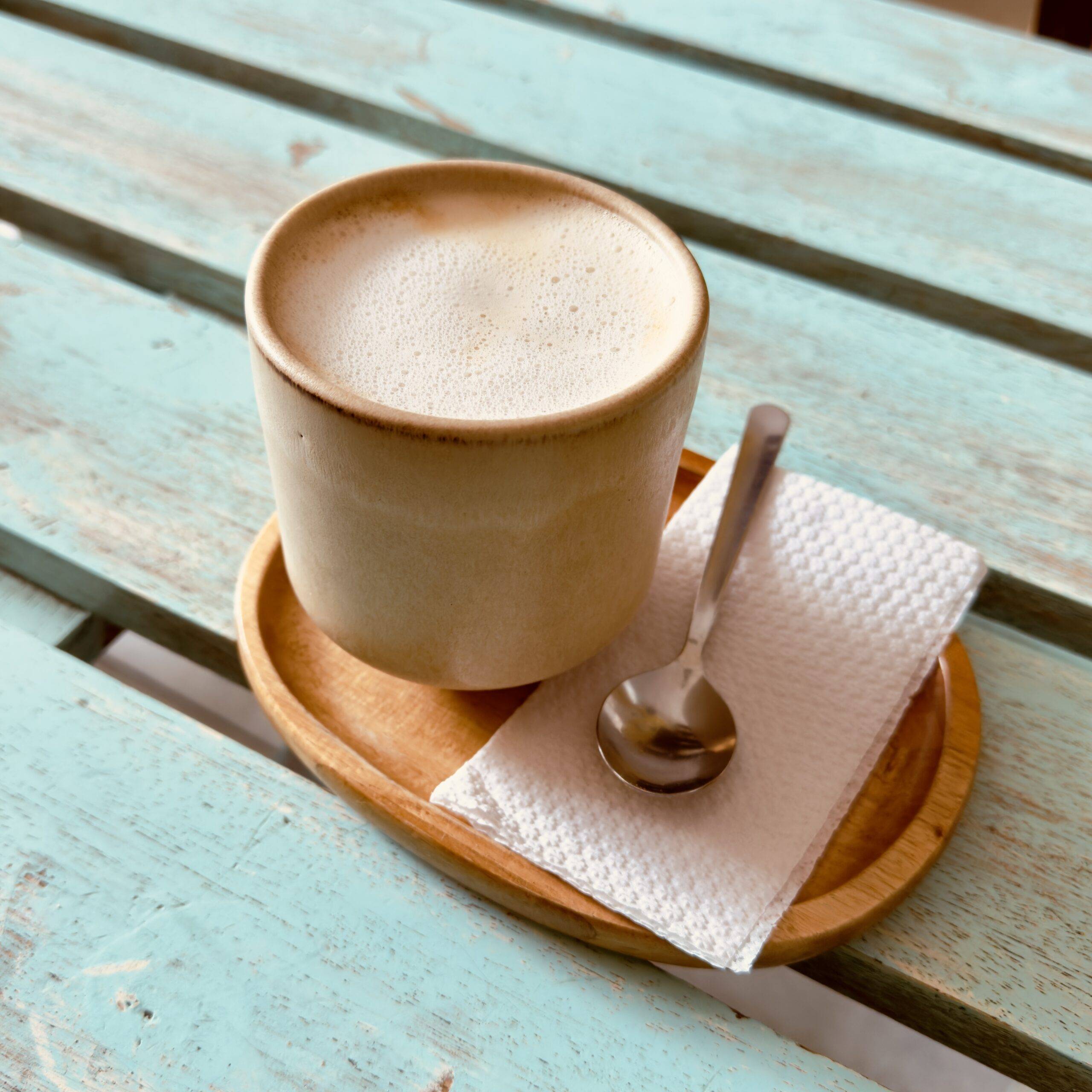
Huanchaco isn’t the kind of place that overwhelms you with attractions. It’s small, slow, and easy to get to know. The best things to do here are simple, surf, eat, explore, repeat, with enough local life mixed in to remind you you’re still in Peru, not a resort bubble.
Here’s what filled our days (and our kids’ patience levels):
1. Go Surfing — or Learn to
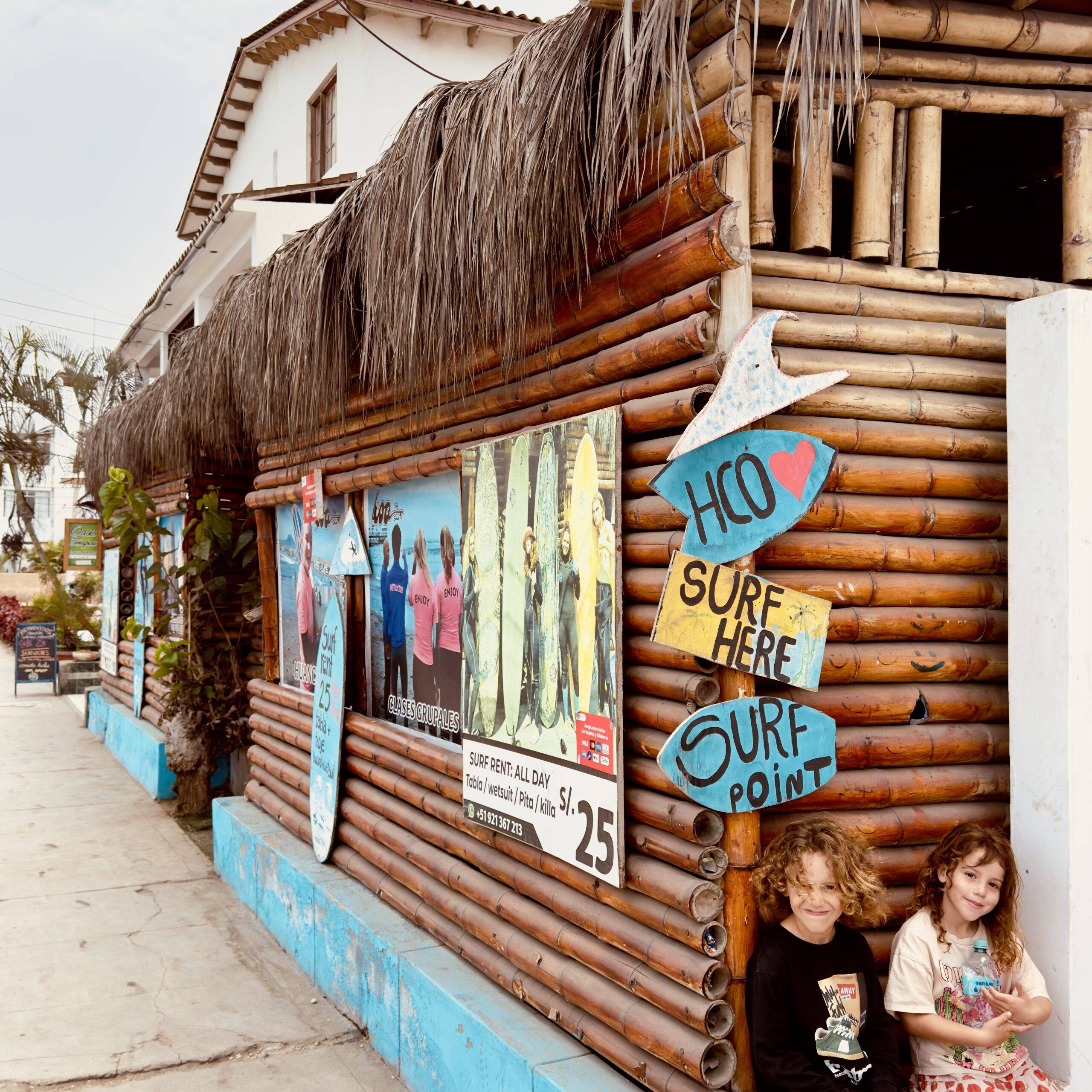
Huanchaco is one of the most famous surf towns in northern Peru, with gentle, consistent waves that make it perfect for beginners and longboarders. You’ll find surfboard rentals and lessons all along the beachfront, usually around 25 soles for board and wetsuit hire, or 60–80 soles for a full lesson.
Even if you’re not a surfer, it’s worth walking down to the beach in the mornings just to watch locals and travellers share waves under the pier. The whole scene has that easy, timeless surf-town feel.
💡 Tip: Early mornings and late afternoons are best for calmer conditions (and smaller crowds).
2. See the Caballitos de Totora
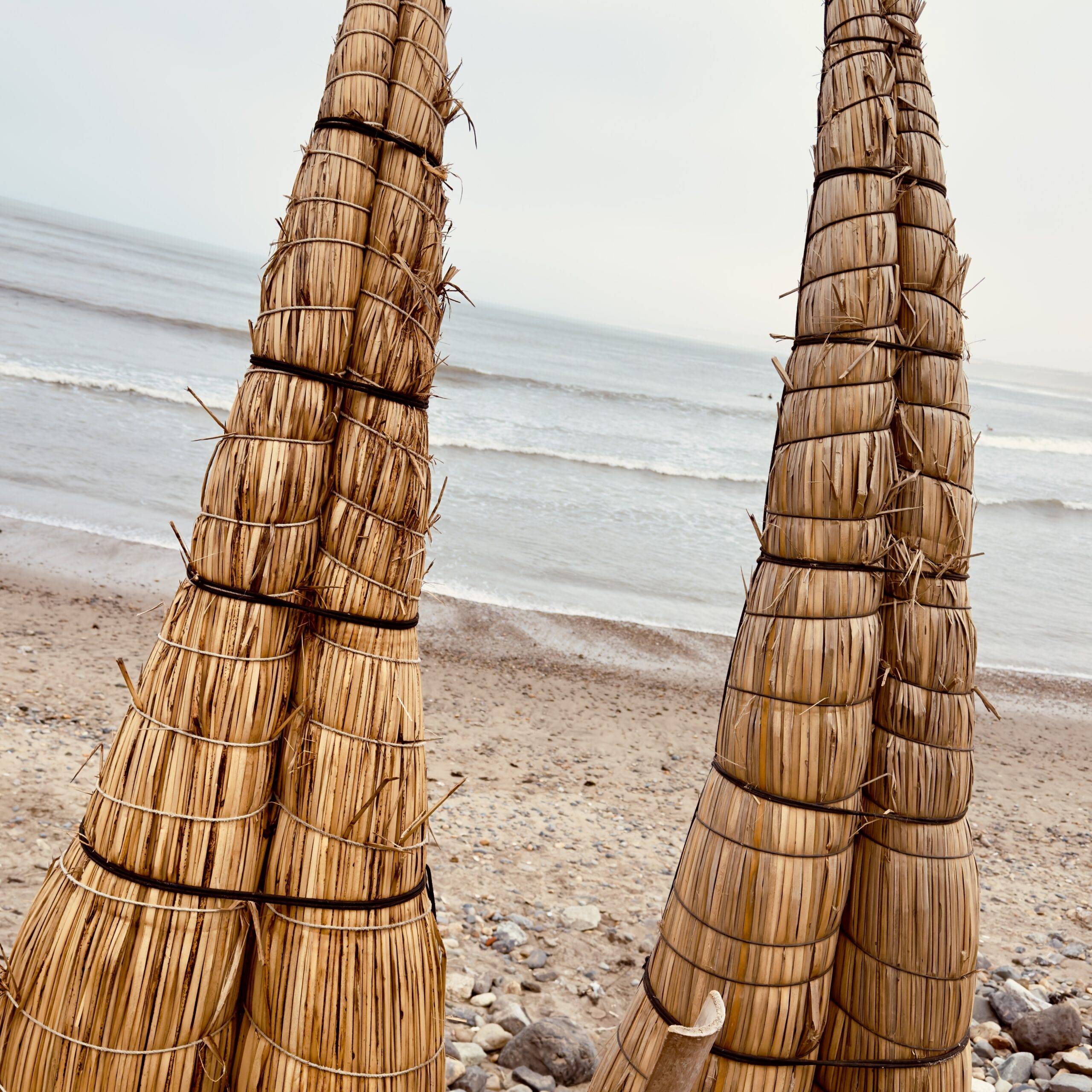
These traditional reed fishing boats are Huanchaco’s living link to Peru’s coastal past. Locals still use them to fish and surf, a tradition that goes back over 2,000 years. You can usually see them drying in the sun along the northern end of the beach near the pier.
Some fishermen offer short rides (for a few soles), it’s not exactly a smooth cruise, but it’s a unique glimpse into the town’s heritage.
3. Stroll the Malecón (Beachfront Promenade)
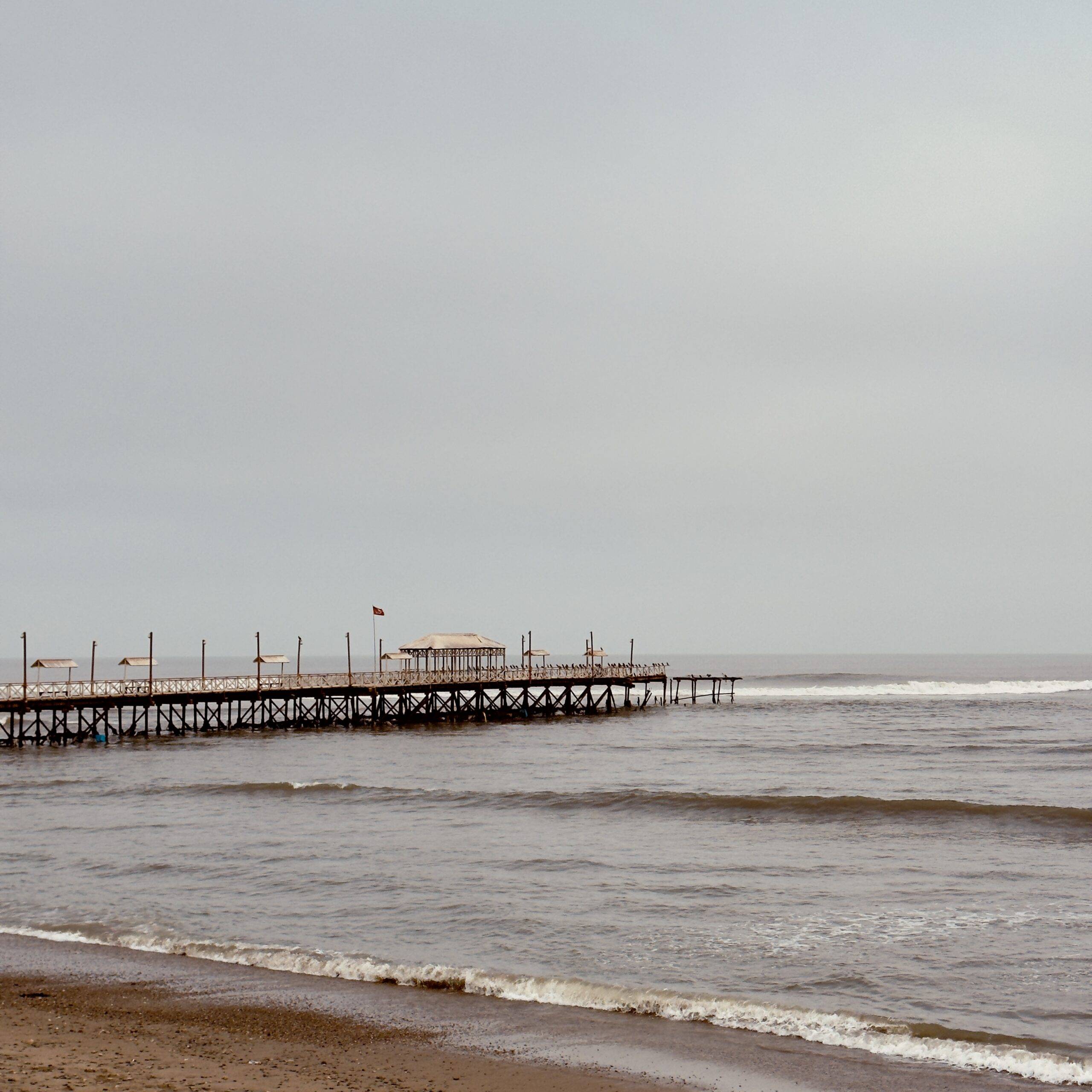
Huanchaco’s malecón runs the length of the beach, lined with small cafés, restaurants, and local snack stalls. In the evenings, it fills with families walking, kids playing football, and vendors selling arroz con leche and sweets.
It’s also one of the best places in Peru to catch a sunset, with the pier and caballitos silhouettes against the orange sky.
4. Visit Huanchaco Market
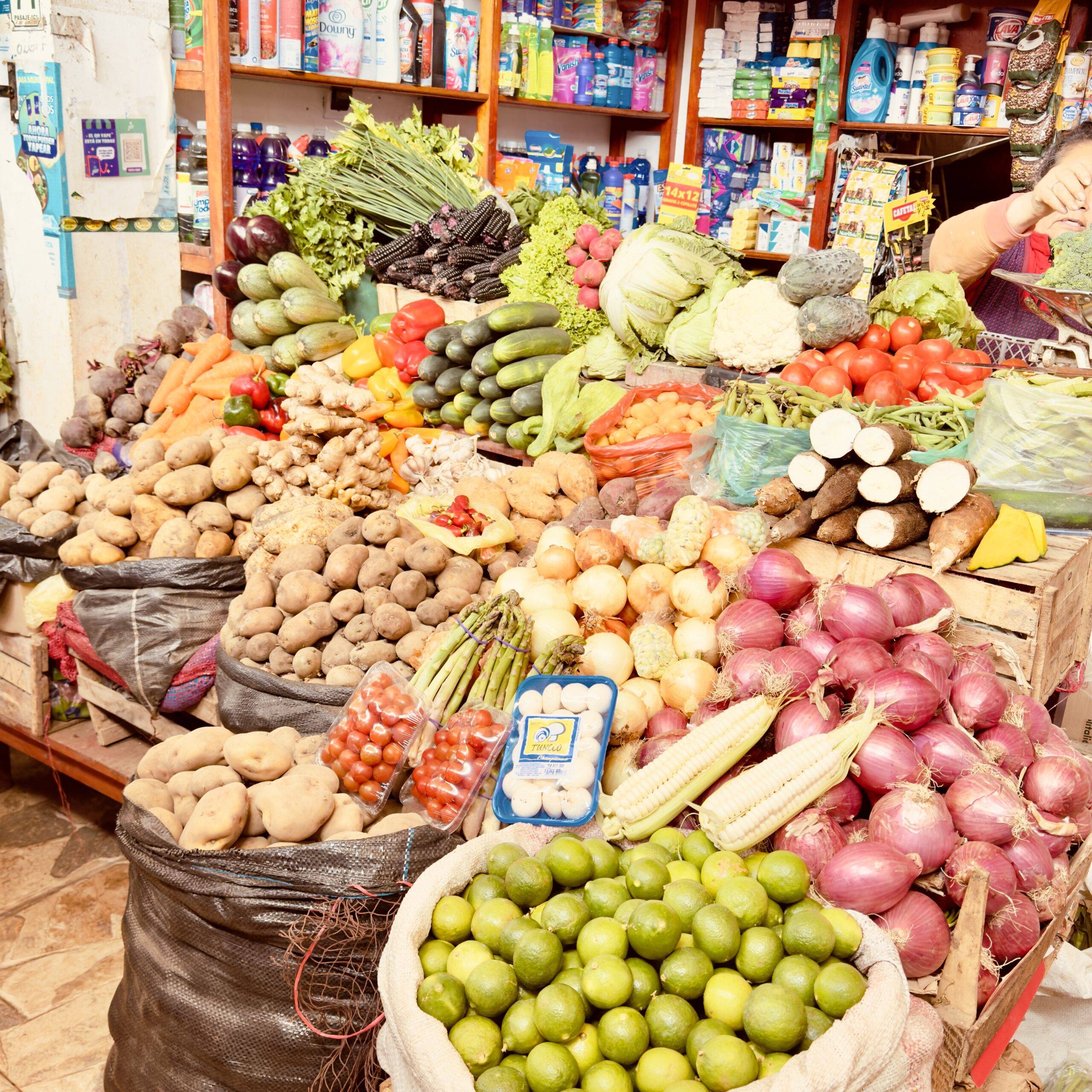
Head to the local market (just a few blocks inland) for a dose of everyday life. You’ll find fruit, vegetables, nuts, and snacks at local prices.. Well maybe im getting carried away with myself not local prices but much cheaper than beachfront shops.
We stocked up here regularly, buying fresh produce and nuts to keep costs down while still eating well. It’s also a good way to meet locals and practise your Spanish, even if it’s just to ask for dos kilos de plátanos, por favor.
5. Find a Park or Playground
Travelling with kids? You’ll be glad to know there are a few decent parks dotted around town. We found one with a basketball court, where we ended up playing daily (after finally buying a basketball in Trujillo).
Simple, safe spaces like these become small anchors for long-term family travel, somewhere familiar to burn energy and reset after exploring.
6. Explore Huacas del Sol y de la Luna
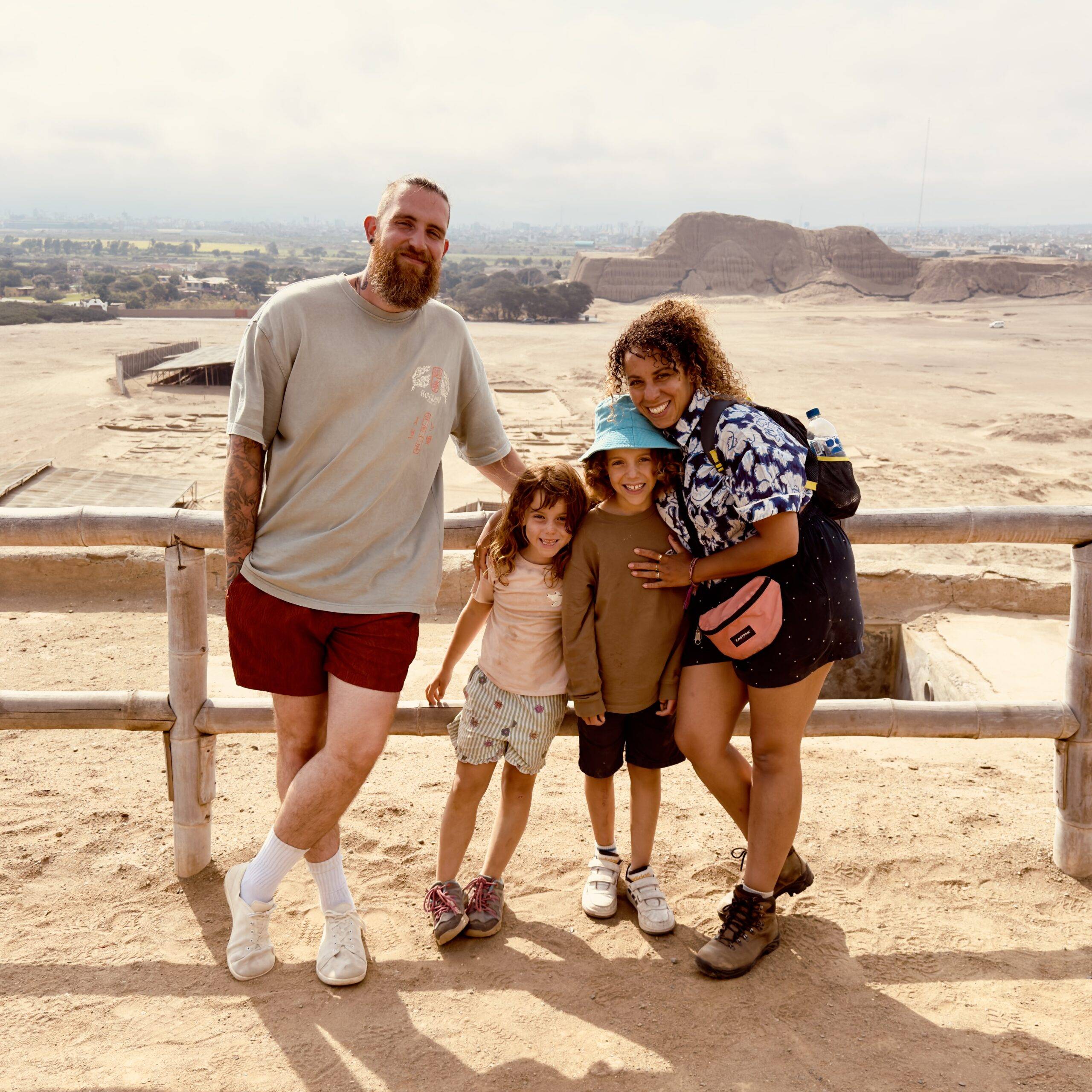
This was one of our favourite day trips, and a must-do if you’re in the area. The Huacas del Sol y de la Luna (Temples of the Sun and Moon) are ancient Moche pyramids just outside Trujillo.
You can only visit with a guide (included in the 20 soles entry fee), and the tours bring the site to life. Our kids loved the colours, carvings, and stories of ancient rituals, it’s history made tangible.
💡Getting There: Take a colectivo or bus toward Moche and ask to be dropped at Óvalo Grau, then grab another minibus or taxi (20 soles) to the site.
Huanchaco may not have endless attractions, but it doesn’t need them. The joy here is in the rhythm, slow mornings, surf sessions, sunsets, and the occasional adventure inland.
Also read: Sandboarding in Huacachina
Where to Eat & Drink in Huanchaco (Local Finds + Hidden Café Gems)
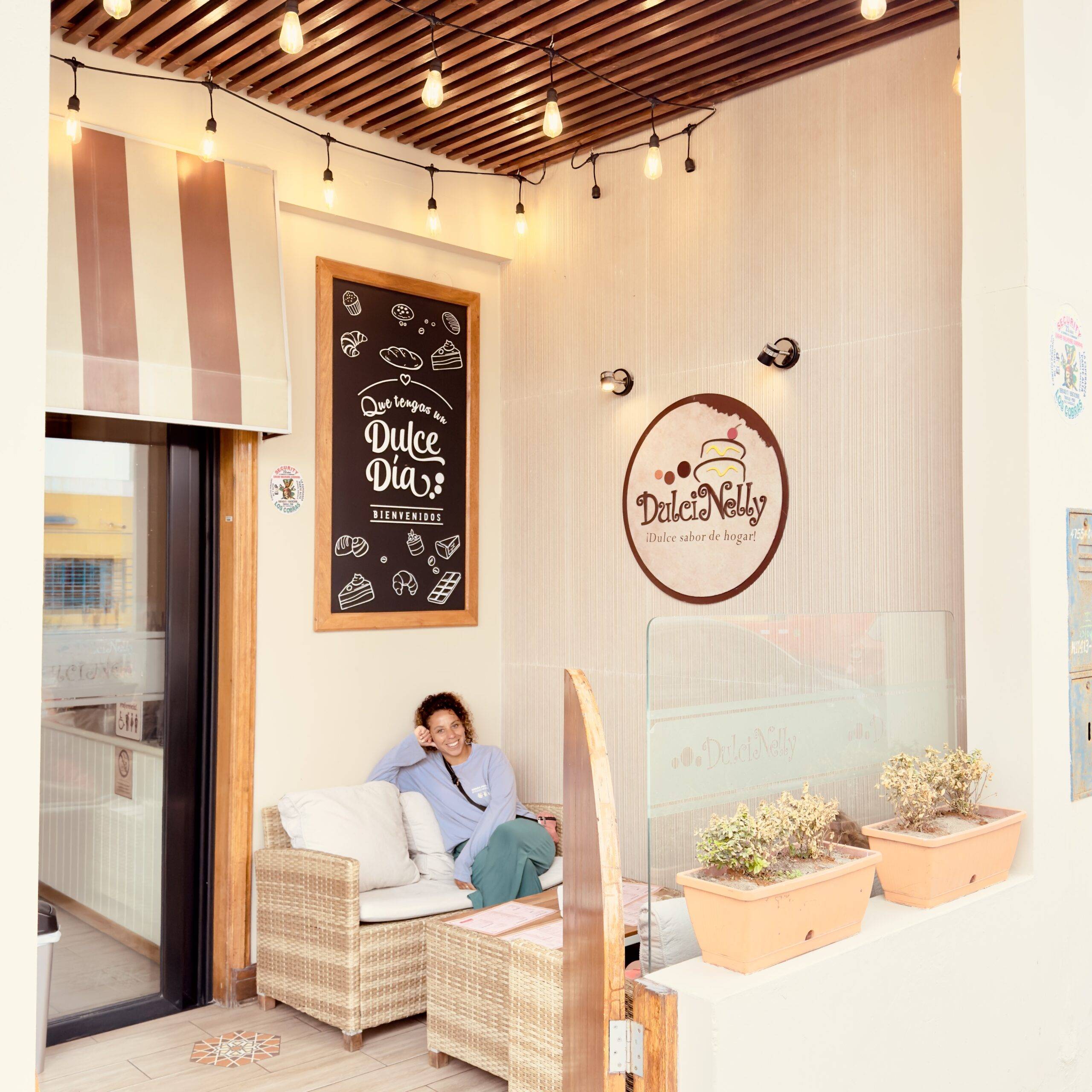
Food in Huanchaco is a mix of beachside classics, surf cafés, and no-frills local spots where the menu changes daily. It’s not quite a foodie destination, but if you know where to look, there’s good coffee, great pizza, and a few local gems that make eating out easy and affordable…even with kids.
Crepes Sol - The Coffee Lifesaver
After weeks of searching for decent coffee along the coast, we finally struck gold at Crepes Sol.
They do the best oat milk lattes we’ve had in Peru, along with waffles and smoothie bowls that kept everyone happy.
Prices are higher than local cafés (think “surf town prices”), but the coffee quality makes it worth every sol.
📍 Location: Google map location
Bassano Pizzería a la Leña - The Best Pizza in Town
If you’ve been travelling long enough, you know how rare good pizza can be. Bassano Pizzería a la Leña nails it, wood-fired, crispy edges, and big enough to share.
It’s family-run and relaxed, with friendly service and fair prices.
💡 Try: The “Napolitana” or “Vegetariana,” both under 25 soles.
El Ancla Restaurantem - Local Food Done Right
A simple, open-air restaurant right by the beach that serves chaufa (Peruvian fried rice), chips, and fresh fish for around 20 soles a dish.
Nothing fancy, but huge portions and full of locals, always a good sign.
We found it to be one of the best value meals in Huanchaco.
DulciNelly - For Sweet Tooths
If you or your kids have a thing for desserts, DulciNelly is a must. Think homemade cakes, tres leches, and creamy flan.
Grab a slice to go and eat it while walking the malecón at sunset, it’s one of those small joys that becomes a memory.
Budget-Friendly Local Eats & Tips
- Look for menu del día boards (Peru version of ecuadors Almuerzo’s) set meals around 10–15 soles for soup, main, and drink.
Buy fruit and snacks at the local market to save on café stops.
Try the beach stall that sells arroz con leche (sweet rice pudding) the kids loved it.
Huanchaco’s food scene isn’t about variety; it’s about finding a few reliable places and returning to them again and again. After a few days, the café staff start to recognise you, the pizza guy waves, and suddenly, it feels like home.
Day Trips from Huanchaco
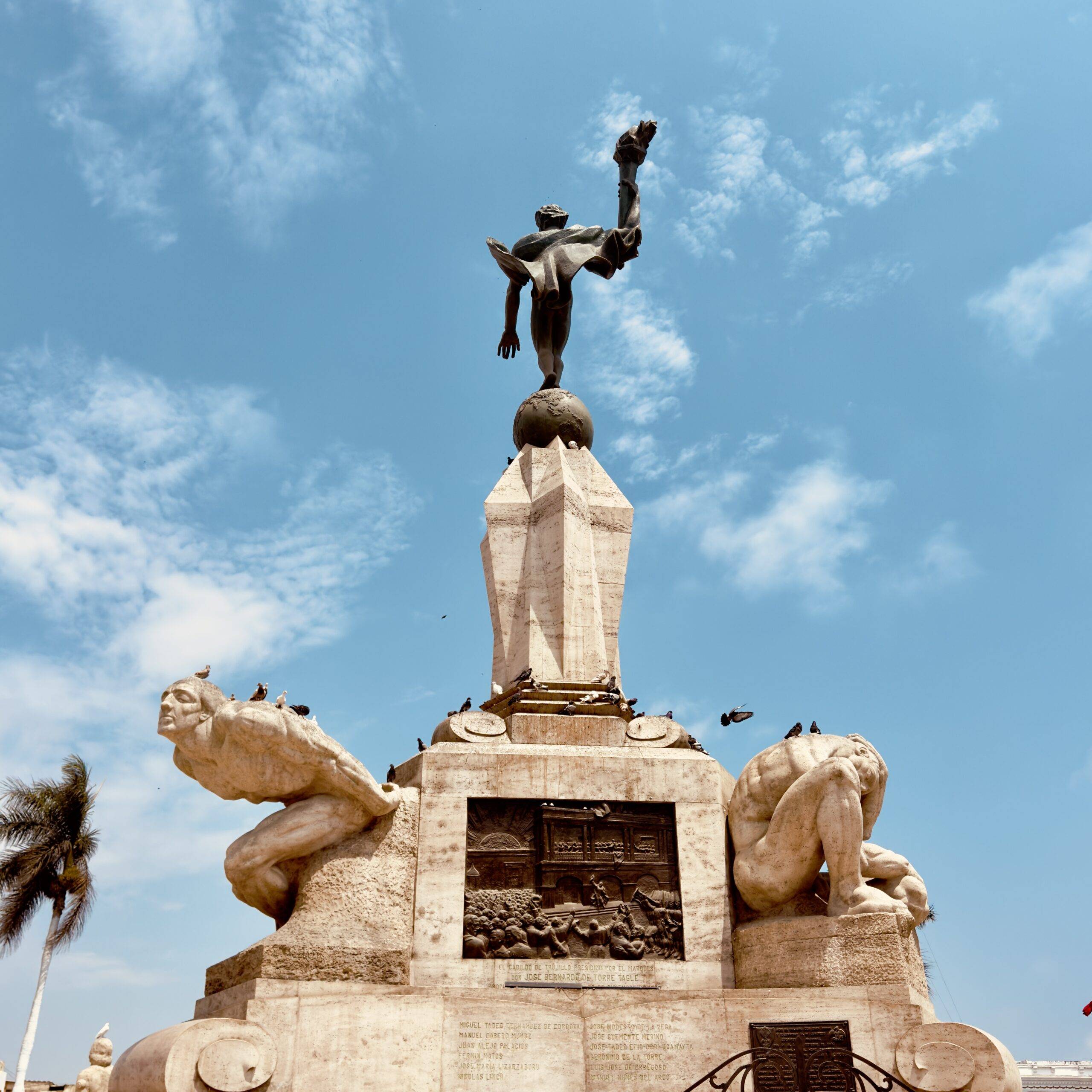
One of the best things about Huanchaco is how much there is to explore nearby.
You can soak up beach life one day and ancient history the next, all within 30 minutes.
We based ourselves in Huanchaco for nearly a week and took a few easy day trips that felt like stepping into entirely different parts of Peru.
1. Huacas del Sol y de la Luna (Temples of the Sun and Moon)
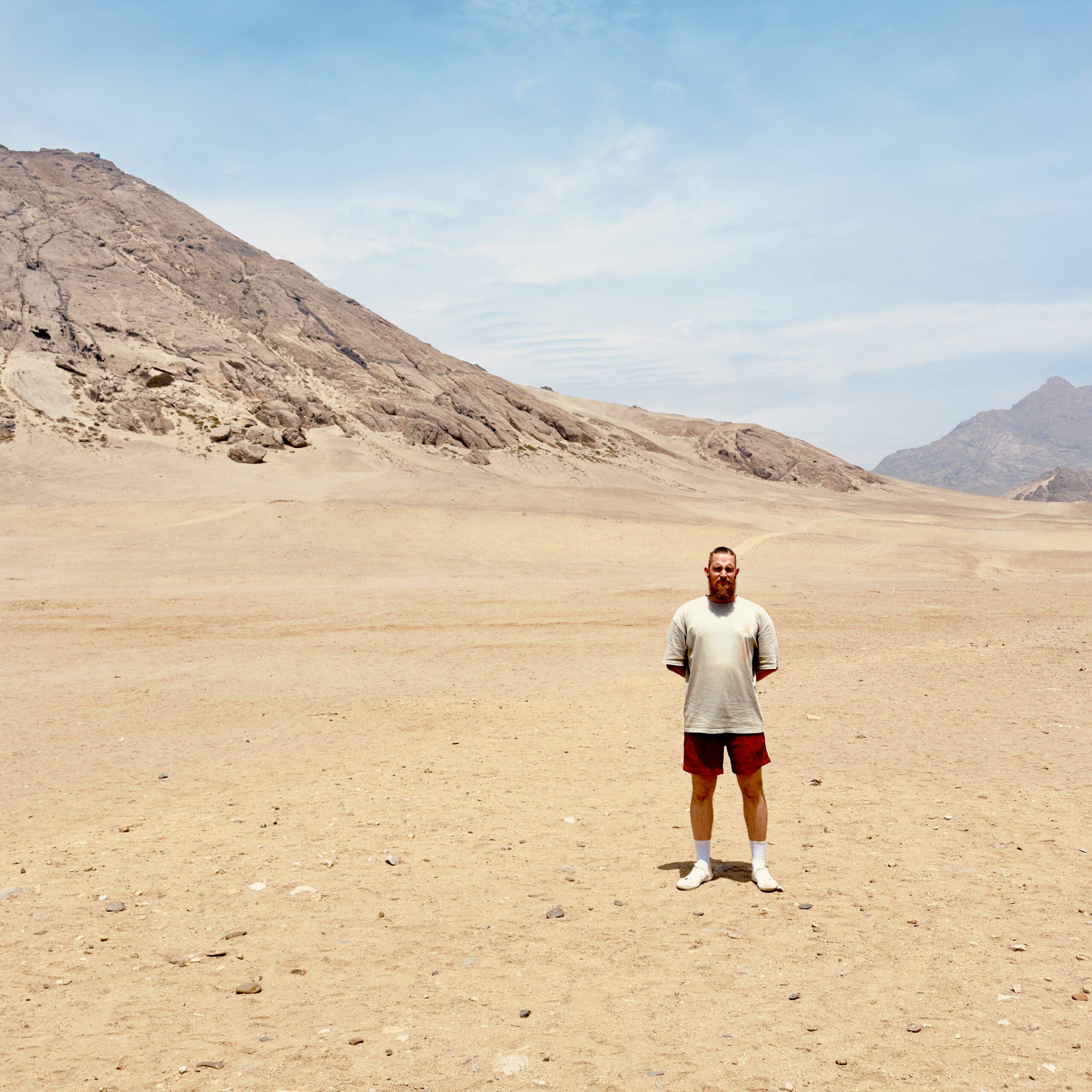
Just outside Trujillo lies one of northern Peru’s most fascinating archaeological sites, the Huacas del Sol y de la Luna.
Built by the Moche civilisation more than 1,500 years ago, these pyramids were used for ceremonies, sacrifices, and worship long before the Inca era.
You can only visit with a guide, included in the 20 soles entry fee, and tours run in English and Spanish throughout the day. The site is beautifully preserved, intricate murals, colourful frescoes, and hauntingly quiet temples that make you feel the weight of history.
Our kids loved it. It felt like a real-life history lesson, and the guide was great at simplifying the stories for them.
2. Chan Chan Archaeological Site
Once the capital of the Chimú civilisation, Chan Chan is the largest adobe city in the world, sprawling, maze-like, and still slowly being uncovered.
It’s just a 20-minute drive from Huanchaco and easy to combine with a stop at Museo de Sitio Chan Chan (the on-site museum).
We decided to skip Chan Chan this time after visiting the Huacas, but most travellers say it’s worth a visit if you’re short on time or fascinated by pre-Columbian history.
💡 Tip: Entry is 10 soles, and the museum adds context to what you’re seeing. Bring a hat, there’s little shade.
3. Trujillo City
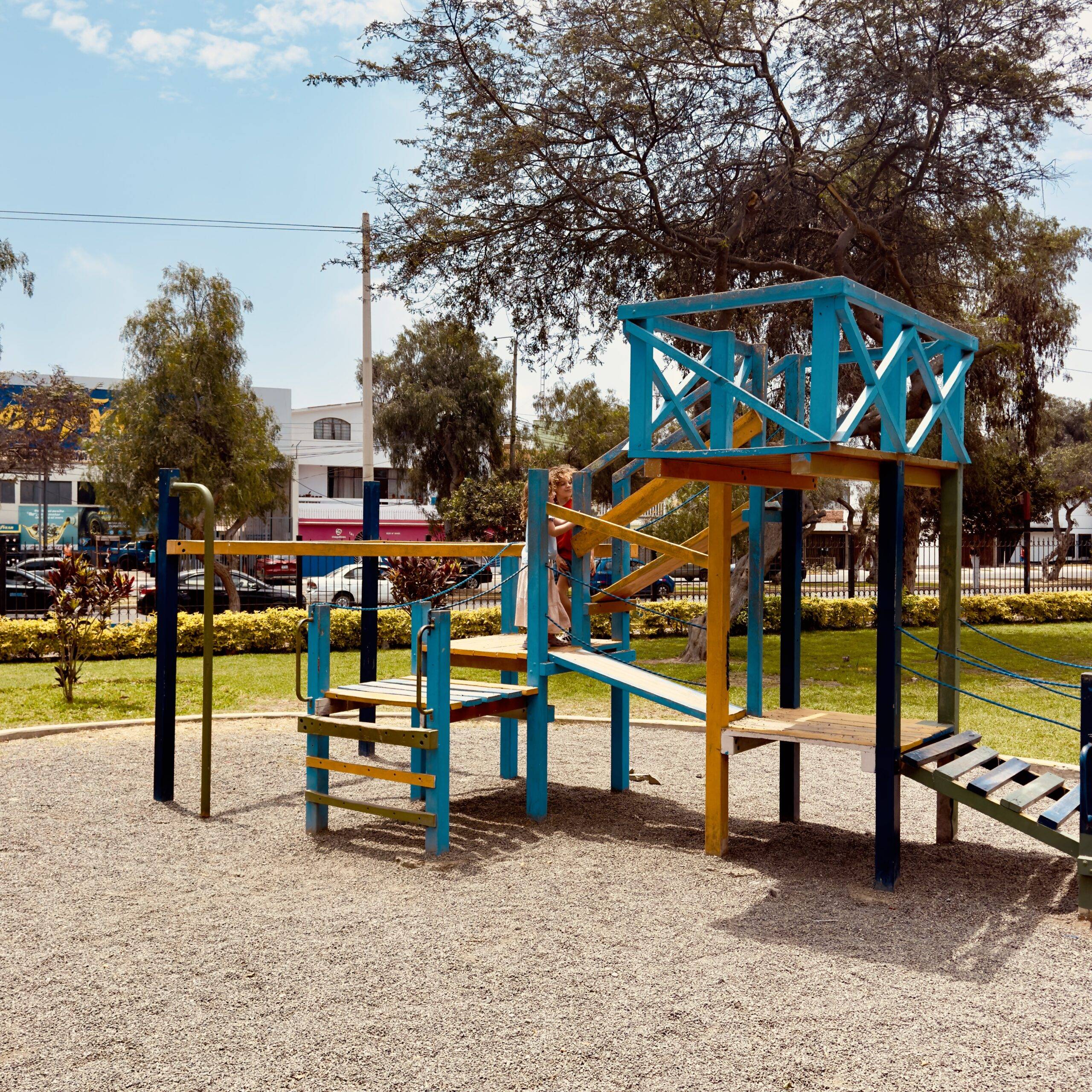
A short ride from Huanchaco, Trujillo is a colourful, busy city, a good mix of colonial architecture, parks, and modern shops.
We made a couple of day trips in and out, mostly to run errands and explore.
Our favourites were:
Plaza de Armas: Colonial heart of Trujillo, full of bright yellow buildings and cafés.
Toy Museum: Small, quirky, and fun for kids (8 soles entry).
San Andrés Park: A larger park further south, quieter and great for a picnic.
Trujillo is also the most practical place nearby for ATMs, pharmacies, and larger supermarkets.
On thing you’ll notice in Peru is if someone opens a certain type of shop so lets say tech repair shop then multiple other will open the same shop on the same street. Trujillo is full of tech shops, pharmacies.
4. Moche Town & Local Villages
If you want something quieter, the small town of Moche itself is worth a wander. You’ll find local pottery workshops, small markets, and a few family-run eateries.
This side of the region still feels traditional, dusty streets, tricycle taxis, and locals chatting on doorsteps.
Is Huanchaco Safe For Families?
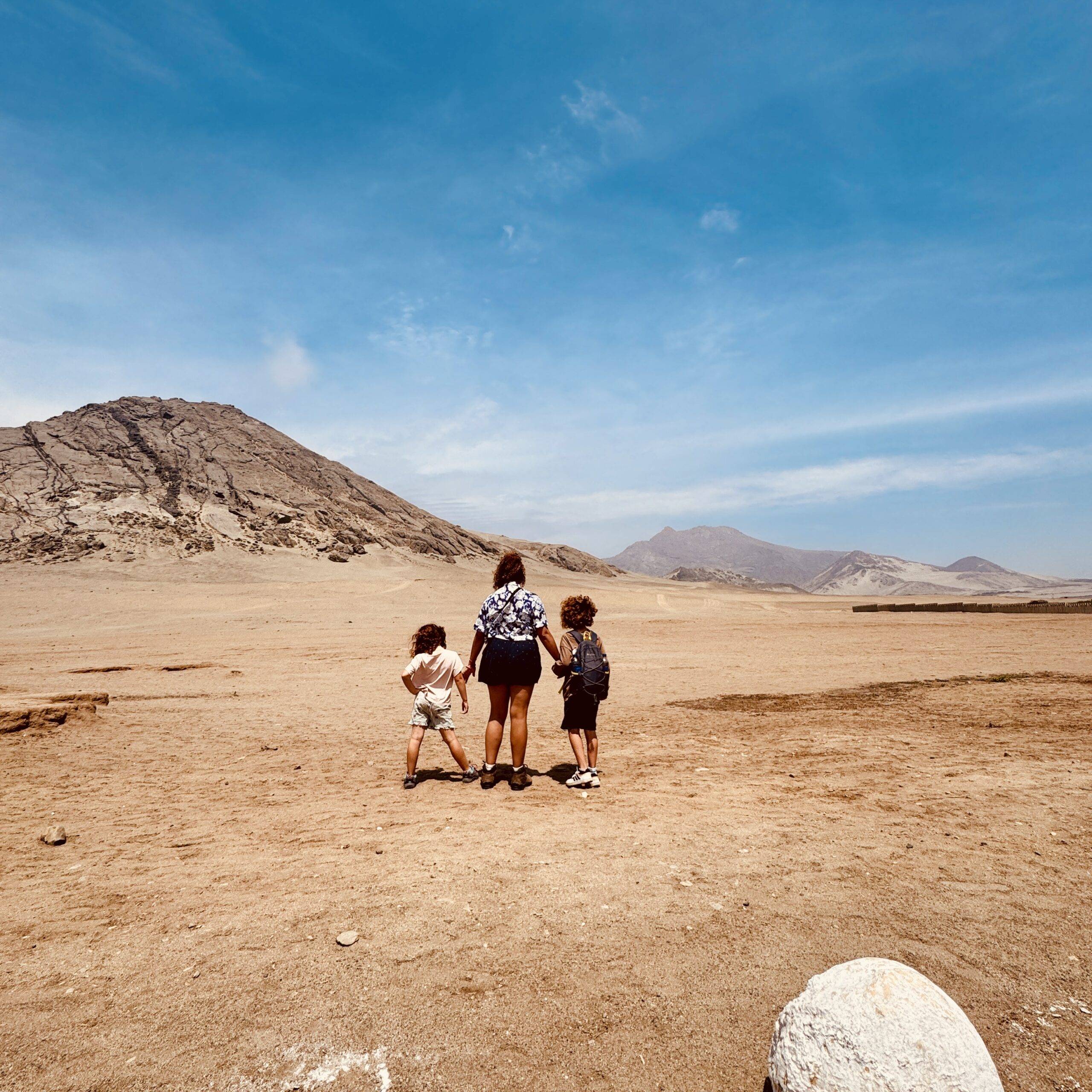
Short answer: yes, Huanchaco is safe, but like most small Peruvian coastal towns, it comes with a few caveats.
We never felt unsafe here. We walked the malecón at sunset, took local minibuses into Trujillo, and let the kids play in the parks. People were friendly and curious, and locals often went out of their way to help, whether it was giving directions or calling us a taxi when we were lost.
That said, Huanchaco isn’t picture-perfect. You’ll notice litter along parts of the beach, a few stray dogs, and at times, patchy street lighting away from the main road. It’s not dangerous, just the kind of place that rewards awareness and common sense.
Our Safety Notes
- Stick to the main road and promenade after dark. The malecón stays lively and well-lit, but side streets can feel empty.
Avoid swimming near the pier. The current can be strong, and it’s better to surf or paddle further south.
Don’t leave valuables unattended on the beach. Keep cameras and phones close or with someone in your group.
Use registered taxis or InDriver. Especially if you’re coming back from Trujillo after dark.
Keep small cash on hand. Not everyone takes card, and flashing large bills can draw attention.
For families, Huanchaco is low-stress and friendly. Locals are patient with kids, surf instructors are gentle, and cafés never blink when you show up with sandy shoes or sleepy toddlers.
We walked everywhere, played basketball at the local court, and shopped at the market without hassle. It’s not manicured, but it’s manageable, and that’s part of its charm.
Huanchaco feels like a place where life moves at half-speed, not because it has to, but because it wants to. Stay aware, stay respectful, and you’ll find it one of the easier and more welcoming coastal towns to travel through in northern Peru.
How Long to Stay & Where to Go Next
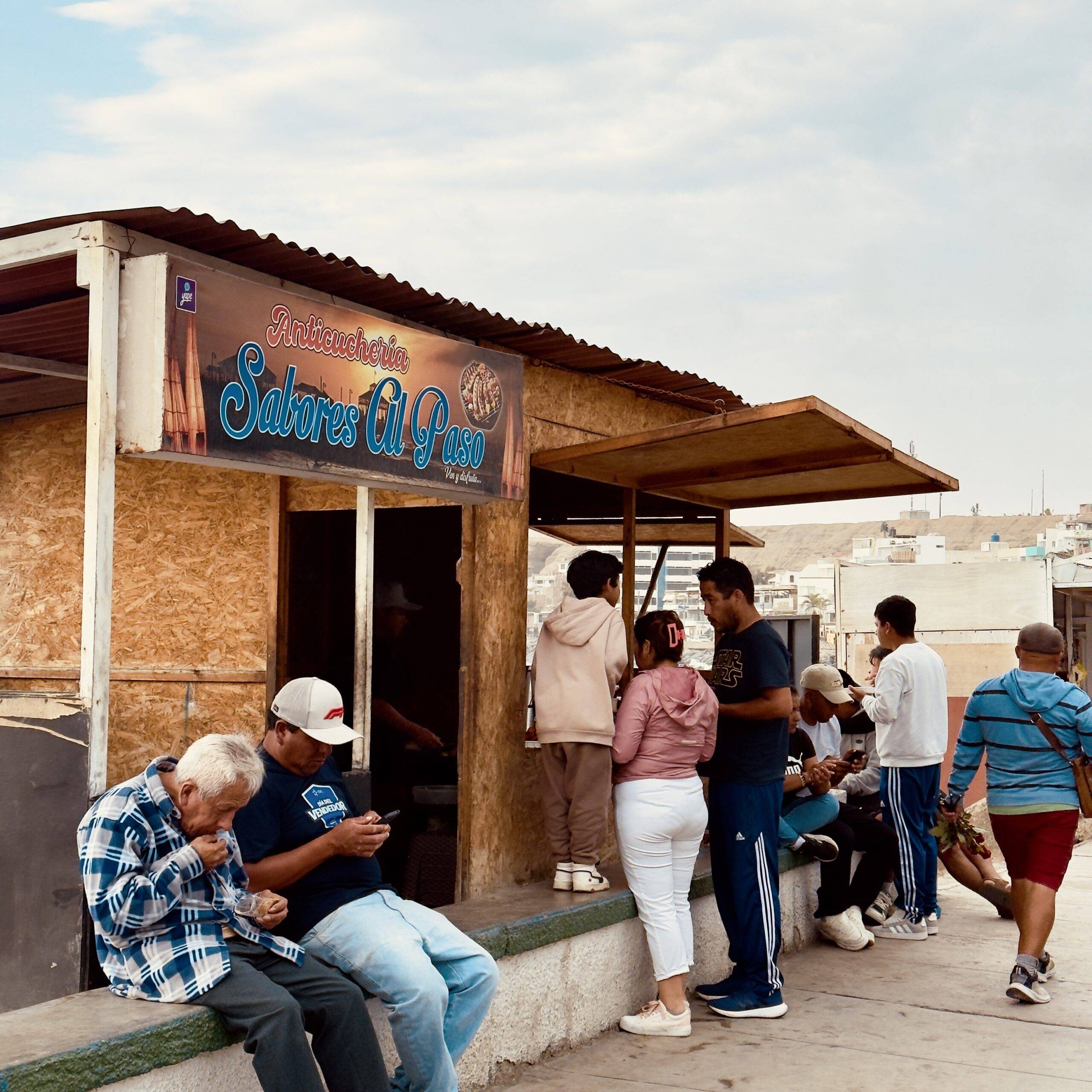
Most travellers drop into Huanchaco for a couple of days, a quick surf stop before heading south. But honestly? It’s one of those places that rewards slowing down.
We stayed just under a week, and that felt right. Long enough to settle into a rhythm: mornings on the beach, afternoons exploring, evenings walking the promenade. If you’re travelling with kids or working remotely, 4–6 days is the sweet spot.
That gives you time to:
-
Learn to surf (or just watch the pros).
-
Visit the Huacas del Sol y de la Luna and Trujillo city.
-
Fall into the daily pace, markets, sunsets, repeat.
If you’re on a tighter itinerary, 3 nights will still let you experience the essentials without rushing.
Where To Go Next?
Huanchaco makes a great mid-point between northern and central Peru, so where you head next depends on your route:
Heading North:
-
Lobitos or Máncora – More surf, more sun, and quieter beaches. Great if you’re chasing warmer water and smaller towns.
-
Piura or Talara – Easy transport hubs if you’re catching buses or flights north toward Ecuador.
Heading South:
-
Huaraz – For mountains, hikes, and a complete contrast to the coast.
-
Lima – An overnight bus or short flight away; ideal for regrouping before the Andes or Cusco.
💡 Tip: Night buses from Trujillo to Lima take around 9–10 hours. We’ve done a few now, and they’re a surprisingly efficient way to travel, save a night’s accommodation, sleep through the journey, and wake up in a new city.
Huanchaco may not make every “top 10 Peru” list, but it’s the kind of place that finds its way under your skin. You come for a few waves, a few ruins, maybe a few sunsets, and leave remembering how good it feels to just be still for a while.
Why Huanchaco Was Worth It
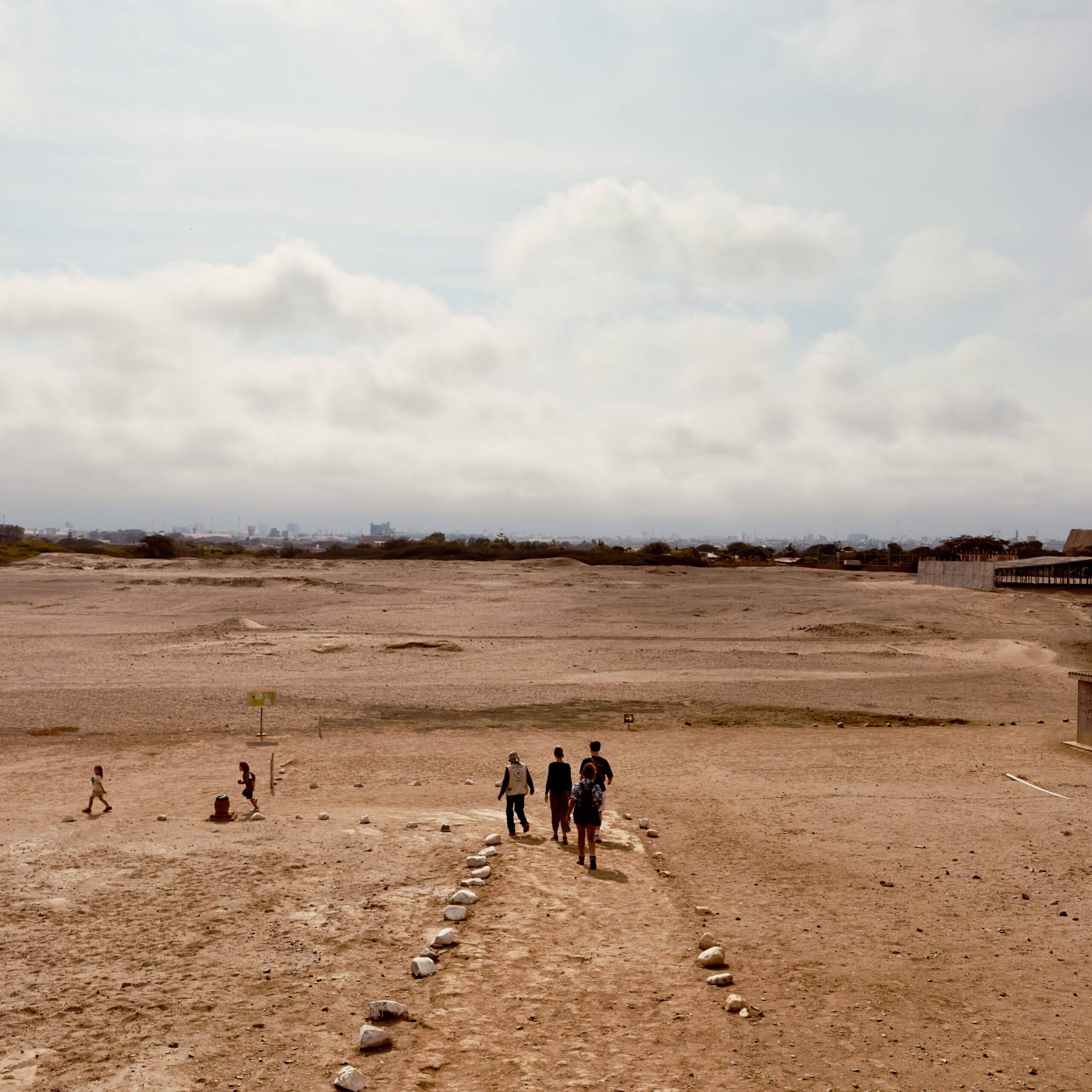
Huanchaco doesn’t try too hard, and that’s exactly its charm.
It’s a little rough around the edges, a little slower than expected, but once you settle into its rhythm, it starts to feel like home. Days here aren’t about ticking off attractions; they’re about finding space, space to breathe, surf, wander, and watch the world go by from a beach wall with a cup of arroz con leche in hand.
For us, Huanchaco was a pause between bus rides and border crossings. A week where we traded plans for routines, market runs, sunsets, surf lessons, and long walks to nowhere in particular.
It may not have the polished charm of Peru’s southern highlights, but it has something better: authenticity. It’s lived-in, imperfect, and real, a reminder that family travel doesn’t need to be all adventure or luxury. Sometimes, the beauty lies in ordinary days by the sea.
If you’re travelling Peru slowly with kids, backpacks, or both, Huanchaco is worth a stop. It’s where surfboards meet history, and time finally slows down enough for you to enjoy it.
Ready to Plan Your Route?
Continue your Peru journey:
➡️ Máncora, Peru: The Complete Family Guide
➡️ Lobitos, Peru: A Hidden Surf Town for Families Who Love Slow Travel
➡️ Nazca Lines With The Kids
And if you’re mapping your own route through Peru, don’t miss our Free Family Travel Map, every café, park, and budget-friendly stop we loved across the coast and highlands.
This is a work in progress and I will keep adding to it.
📍 Grab it in your inbox here → [Family Peru Map + Toolkit]


